I have a single page with angular and the content look like this:
And when I click on some tab, for example "Servicios", the services content is shown under the tabs.
Here is the respective code:
<a href ng-click="tab.setTab(4)">Servicios</a>
....
<perfil-content ng-show="tab.isSet(2)"></perfil-content>
<brand-content ng-show="tab.isSet(3)"></brand-content>
<service-content ng-show="tab.isSet(4)"></service-content>
All this is in an unique route, for example: http://localhost:9000/#/
Now what I want is that when http://localhost:9000/#/services is given, show the services content like when is clicked.
I tried this:
<service-content ng-show="location.hash == '#/services'">
but do not works.
Thank you, for any help.
